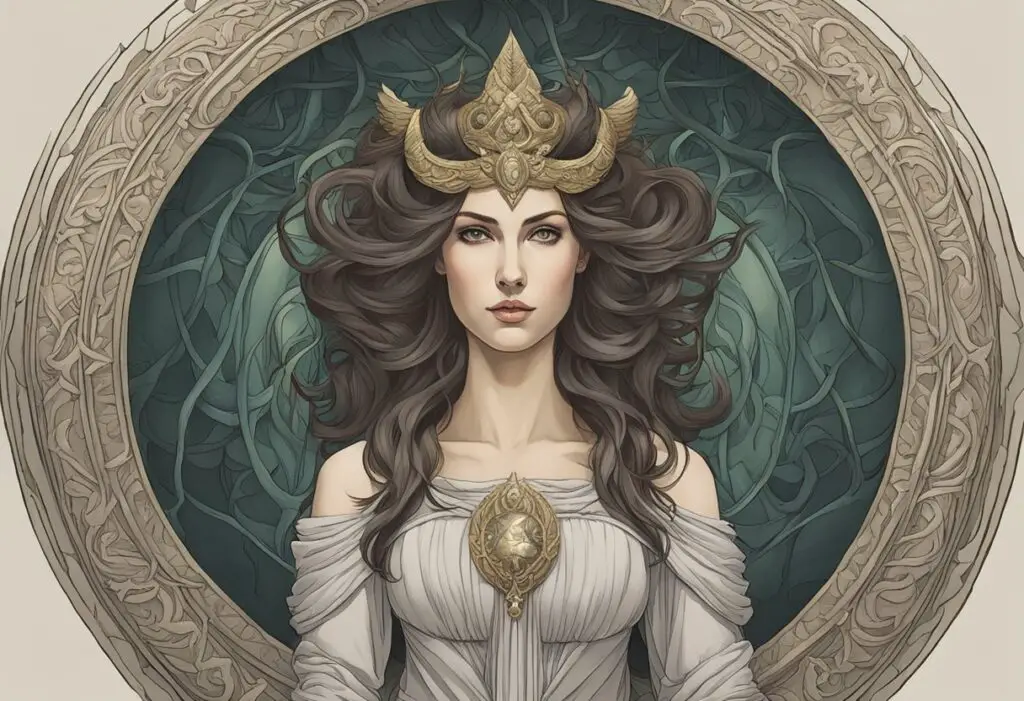Lilith is a figure in Jewish mythology that has taken on many shapes over the millennia. She is not mentioned in the Bible, but some Jewish and Christian literature references her. According to the legends, Lilith was Adam’s first wife, but she was banished from the Garden of Eden for not complying with and obeying Adam.
Lilith is described as a female figure in Mesopotamian and Judaic mythology, theorized to be the primordial she-demon. She is thought to be mentioned in ancient texts as a class of winged female demons that attack pregnant women and infants and as a beauty in some medieval paintings. Lilith has taken on many shapes over the millennia, from a wilderness demoness to Adam’s first wife.
Even though Lilith is not mentioned in the Bible, her story has intertwined ancient Mesopotamian and Jewish beliefs for thousands of years. The traditional description of Lilith blends ancient demonic lore with Biblical cosmology in a way that often defies gender norms. Her story has been a subject of debate and interpretation for centuries and continues to be a fascinating topic for scholars and enthusiasts alike.
Lilith in the Bible

Lilith is a figure that is not directly mentioned in the Hebrew Bible, but rather in apocryphal texts. There are differing opinions on who or what Lilith represents, and her existence in the Bible is a topic of debate among scholars and theologians.
Hebrew Bible Mention
The only possible mention of Lilith in the Hebrew Bible is in Isaiah 34:14, where it describes a “night creature” that dwells in the desert. Some scholars believe that this creature could be Lilith, although others argue that it is simply a reference to a type of owl or other nocturnal animal.
Apocryphal Texts
The most well-known reference to Lilith comes from the apocryphal text known as the Alphabet of ben Sirach, which dates back to the 8th century CE. In this text, Lilith is described as the first wife of Adam, created at the same time and from the same earth as him. However, she refused to submit to Adam and fled from him, ultimately becoming a demon that preyed on newborn infants.
Other apocryphal texts, such as the Zohar and the Talmud, also mention Lilith in various contexts. In these texts, she is often portrayed as a seductive and dangerous figure, associated with sexual temptation and the corruption of men.
It is important to note that Lilith’s existence in the Bible is not universally accepted, and many scholars argue that she is a later addition to Jewish mythology. Regardless of her origins, Lilith has become a prominent figure in popular culture and continues to fascinate and intrigue scholars and laypeople alike.
Lilith in Jewish Mythology

The Legend of Lilith
Lilith is a figure in Jewish mythology who is believed to be the first wife of Adam, the first man created by God. According to the legend, Lilith was created at the same time as Adam, from the same earth, and was meant to be his equal. However, Lilith refused to submit to Adam’s authority and left the Garden of Eden.
The story of Lilith is not mentioned in the Bible, but rather in ancient Jewish texts such as the Talmud and the Midrash. In these texts, Lilith is often depicted as a dangerous and seductive figure, associated with night and darkness.
Lilith’s Role in Folklore
In Jewish folklore, Lilith is often portrayed as a demon or a succubus, who preys on men and newborn infants. She is said to have the power to cause illness, infertility, and even death. To protect themselves from Lilith’s wrath, Jewish mothers would hang amulets with the names of three angels around their children’s necks.
Despite her negative reputation, Lilith has also been embraced by some feminist and alternative spiritual movements as a symbol of female empowerment and rebellion against patriarchal authority.
In conclusion, Lilith is a complex figure in Jewish mythology, whose story has been shaped by centuries of interpretation and reinterpretation. While some see her as a dangerous and demonic force, others view her as a powerful and independent woman who refused to be subservient to men.

